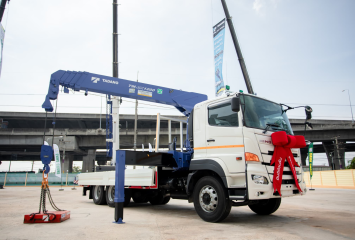

The Boom Truck Inspection Training Course is designed to provide operators, maintenance personnel, and safety professionals with the knowledge and skills needed to properly inspect, maintain, and operate boom trucks. Boom trucks, also known as crane trucks or truck-mounted cranes, are essential in a wide variety of industries for lifting heavy loads. The training focuses on ensuring safe operation, preventing accidents, and ensuring compliance with relevant safety standards and regulations.
Understand boom truck components – Recognize the key parts of a boom truck, including its crane, stabilizers, and controls.
Perform pre-operation inspections – Identify safety hazards and carry out a thorough inspection of the boom truck before operation.
Understand safety protocols – Demonstrate knowledge of safe operation procedures, emergency response actions, and risk mitigation strategies.
Understand legal and regulatory requirements – Be familiar with relevant safety standards, such as OSHA (Occupational Safety and Health Administration)
and ANSI (American National Standards Institute) regulations.
Identify maintenance needs – Recognize the signs of wear and tear and understand the importance of routine maintenance for operational efficiency and safety.
Respond to emergencies – Understand how to handle unsafe conditions, accidents, and emergency situations that could arise during boom truck operations.
Introduction to Boom Trucks
What is a boom truck?
Components and parts of the boom truck.
Differences between boom trucks and other cranes.
Pre-Operational Inspections
Importance of daily inspections.
Step-by-step checklist for inspecting the boom truck.
Identifying potential hazards and issues.
Function checks (e.g., hydraulic system, brakes, load chart).
Boom Truck Safety Standards and Regulations
OSHA and ANSI regulations for boom trucks.
Load capacity, stability, and lifting operations.
Safety features and equipment (e.g., outriggers, stabilizers).
Documentation and record-keeping for inspections.
Boom Truck Operation
Operating the boom truck safely.
Control and maneuvering of the boom.
Setting up the boom truck for work (stabilizing, leveling, and proper placement).
Basic lifting techniques and load handling.
Troubleshooting and Maintenance
Common issues and malfunctions.
Routine maintenance practices.
Addressing wear and tear on key components (hydraulic systems, cables, etc.).
Preventive maintenance schedules.
Emergency Procedures
How to respond to mechanical failures, accidents, or unstable loads.
Emergency shutdown procedures.
How to evacuate the area and secure the scene.
Post-Operation Inspections and Reporting
Completing post-use inspections.
Reporting issues and documenting inspection results.
Clean-up procedures and ensuring the boom truck is ready for future use.
Course Review and Assessment
Review of key concepts.
Final exam or practical evaluation (depending on the course structure).
Boom truck operators
Maintenance personnel
Safety professionals
Supervisors and managers
Anyone seeking certification